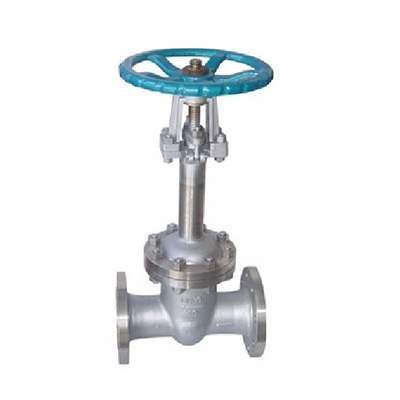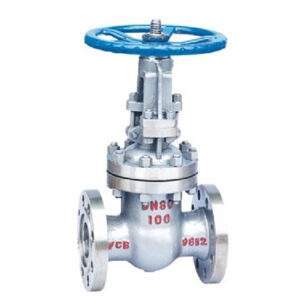Introduction

Gate valves are essential components in various industrial applications, controlling the flow of liquids and gases in pipelines. Their simple yet effective design makes them a popular choice for on-off service. This comprehensive guide delves into the intricacies of gate valve construction, exploring the various components, materials, and operational principles that contribute to their functionality and reliability. Understanding gate valve construction is crucial for selecting the right valve for a specific application, ensuring optimal performance and longevity. This article will cover everything from the basic components to frequently asked questions about gate valve construction.
Key Components of Gate Valve Construction
Gate valve construction revolves around several key components that work together to control flow. These include:
Body of Gate Valve Construction
The body is the main pressure-containing component of the gate valve. It houses all the internal parts and connects to the pipeline. The body material is selected based on the service conditions, such as temperature, pressure, and the type of fluid being handled. Common body materials include cast iron, ductile iron, cast steel, stainless steel, and various alloys. The design of the body also influences the valve’s pressure rating and overall strength.
Gate of Gate Valve Construction
The gate is the movable part that controls the flow. It is a solid disc or wedge-shaped piece that slides perpendicularly to the flow path. When the valve is open, the gate is fully retracted, allowing unobstructed flow. When closed, the gate completely blocks the flow path, creating a tight seal. The gate’s design, whether it’s a solid wedge, flexible wedge, or split wedge, affects the valve’s sealing performance and its ability to handle thermal expansion and contraction.
Stem of Gate Valve Construction
The stem connects the gate to the actuator (handwheel or automated actuator). It transmits the force required to move the gate. Stems can be either rising or non-rising. A rising stem moves up and down with the gate, providing a visual indication of the valve’s position. A non-rising stem remains stationary, and the gate’s position is indicated by a separate indicator. The stem material must be strong and corrosion-resistant to ensure reliable operation.
Bonnet of Gate Valve Construction
The bonnet is the cover that is bolted to the valve body. It provides access to the internal parts for maintenance and allows for stem movement. The bonnet design also plays a role in containing the internal pressure. The connection between the bonnet and the body is typically sealed with a gasket or other sealing mechanism to prevent leakage.
Seat of Gate Valve Construction
The seats are the sealing surfaces in the body that the gate contacts when the valve is closed. They are crucial for achieving a tight seal and preventing leakage. Seats can be integral to the body or replaceable. The seat material is selected based on the service conditions and the gate material to ensure compatibility and long-lasting sealing performance.
Actuator (Handwheel or Automated) in Gate Valve Construction
The actuator is the mechanism used to operate the valve. For manual gate valves, a handwheel is used to turn the stem and move the gate. For automated gate valves, actuators can be pneumatic, electric, or hydraulic. The actuator is sized based on the valve’s torque requirements and the desired speed of operation.
Materials Used in Gate Valve Construction
The choice of materials is critical in gate valve construction, as it directly affects the valve’s performance, durability, and suitability for various applications.
Body and Bonnet Materials
- Cast Iron: Cost-effective for low-pressure applications.
- Ductile Iron: Offers higher strength and impact resistance than cast iron.
- Cast Steel: Suitable for high-pressure and high-temperature applications.
- Stainless Steel: Provides excellent corrosion resistance for demanding environments.
- Alloys (e.g., Bronze, Brass): Used for specific applications requiring resistance to particular chemicals or fluids.
Gate and Seat Materials
- Same Material as Body: Often used for general service applications.
- Different Material for Enhanced Sealing: For example, a stainless steel gate with a bronze seat for improved corrosion resistance.
- Elastomers (e.g., EPDM, Viton): Used for soft seats to provide a tighter seal, especially in low-pressure applications.
Stem Materials
- Stainless Steel: A common choice due to its strength and corrosion resistance.
- Carbon Steel: Can be used for less demanding applications with proper coatings or treatments.
Types of Gate Valve Construction
Gate valves can be classified into different types based on their gate design and other features:
Solid Wedge Gate Valve Construction
The simplest type, featuring a solid gate that wedges into the seats. Suitable for general service applications.
Flexible Wedge Gate Valve Construction
The gate has a small amount of flexibility, allowing it to better conform to the seats and provide a tighter seal, especially in the presence of thermal expansion or contraction.
Split Wedge or Parallel Slide Gate Valve Construction
The gate consists of two parallel discs that slide against each other. This design is suitable for high-temperature applications and can provide a very tight seal.
Rising Stem Gate Valve Construction
The stem moves up and down with the gate, providing a visual indication of the valve’s position.
Non-Rising Stem Gate Valve Construction
The stem remains stationary, and the gate’s position is indicated by a separate indicator. Suitable for applications where space is limited.
Gate Valve Construction Operation
The operation of a gate valve is straightforward. When the handwheel (or actuator) is turned, the stem moves, causing the gate to slide either up (open) or down (closed). In the open position, the gate is fully retracted, providing a clear flow path. In the closed position, the gate is fully seated against the seats, blocking the flow. Gate valves are designed for on-off service and are not suitable for throttling flow, as this can lead to erosion of the gate and seats.
Comparison of Different Gate Valve Constructions

| Feature | Solid Wedge | Flexible Wedge | Split Wedge/Parallel Slide |
|---|---|---|---|
| Sealing | Good | Better, especially with thermal variations | Excellent, especially at high temps |
| Applications | General service | Applications with temperature fluctuations | High-temperature, high-pressure service |
| Complexity | Simple | Slightly more complex | More complex |
| Cost | Lower | Slightly higher | Higher |
| Maintenance | Easier | Slightly more involved | More involved |
| Suitability for Throttling | Not suitable | Not suitable | Not suitable |
Conclusion
Understanding gate valve construction is essential for selecting, installing, and maintaining these critical components. By considering the various components, materials, and types of gate valves, engineers and technicians can ensure optimal performance and reliability in a wide range of applications. This comprehensive guide has provided a detailed overview of gate valve construction, empowering readers with the knowledge to make informed decisions and troubleshoot potential issues. Choosing the right gate valve construction will ensure efficiency, longevity, and safety in any industrial setting. This knowledge of gate valve construction also allows for better maintenance scheduling and troubleshooting when issues arise. Therefore, a deep understanding of gate valve construction is invaluable for anyone working with fluid control systems.
FAQ
What is the primary function of a gate valve?
Gate valves are primarily used for on-off service, controlling the flow of fluids in pipelines.
What are the different types of gate valve gates?
Common gate types include solid wedge, flexible wedge, and split wedge.
What materials are commonly used in gate valve construction?
Common materials include cast iron, ductile iron, cast steel, stainless steel, and various alloys, depending on the application.
How do I choose the right gate valve for my application?
Consider factors such as the type of fluid, temperature, pressure, and the desired level of sealing when selecting a gate valve.
What is the difference between a rising stem and a non-rising stem gate valve?
A rising stem moves with the gate, indicating its position, while a non-rising stem remains stationary.
